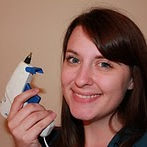Who ever thinks about cleaning your pillows? But let's think about the abuse pillows get. You sleep on them every night. This means spit, sweat, oils from hair and face, and any face products you apply can seep in there. Plus, you fluff, kids battle, and they just get thrown around a lot. They deserve to be fluffed and cleaned every now and then!
This may be TMI about my family but...here's the before: YUCK!
Front loading washing machines are more ideal for this project but I don't have one of those so I just made do. They keep the pillow's shape better. First, I looked at the pillows' tags. They have washing instructions on them!
Then I shoved them, I mean I placed them in my machine standing upright. I think it would've been better to have them horizontal instead of vertical but I guess I can just call this part wayward. I filled up the washer and then added detergent (I just used regular
liquid laundry soap, a mixture of baking soda and vinegar can also be a
great detergent). I followed the care instructions on the tags I found (one pillow's tag had been ripped off). The first symbol (left to right) means warm wash. The next means non-chlorine bleach when necessary. The third means tumble dry, normal, low heat. And the last symbol means do not iron (as if you'd iron a pillow). I have a key on my washing machine that tells me what the symbols mean. This can also easily be looked up online.
After the pillows were washed, They were a little misshapen so I beat them. No, really, I beat them
over my knee until the insides looked a little more normal. Then into the dryer they went. I also threw in some tennis balls with socks over them for fluffing. The tennis balls help break up the fibers that might be unwilling to separate inside the pillow. This traps moisture and makes the pillow misshapen. I dried them for about 2 hours to make sure there was no left over moisture. Then they were ready for a pillow case.
And here's the after: SO much better!


Simple Watercolor Painting for Beginners
I've been interested in watercolor for a few years. This year I finally got into it and feel comfortable in the very beginning stages. I wanted to make a handmade gifts for my nephew and nieces and thought a watercolor painting of an LDS temple would be something special. This method also worked for paintings I did of a bird, book, and sweater.
Prerequiste: know how to mix watercolor paints and how to apply the paint (basically, dab your brush before each time you touch the paper).
First step, find color pages of the temple online. It seems like this would be easy, but I had some criteria: it needed to be simple and I wanted to have several temples, including a small temple design. That was the hardest to find. See our LDS Pinterest board for the coloring sheets I used.
The next step was to trace the temple on a piece of white paper using a pencil. I used a straight edge (ok a board book) to keep my lines straight, which made it take longer but it made it look better. I traced the temple from my laptop screen, like a lightbox. If you wanted, you could just print out the coloring page and skip this step.
Next, color all over the back of the tracing with a pencil. I shared this picture on Instagram and some of you guessed what I was doing! The pencil coloring will be used as a transfer method.
Take your watercolor paper and tape it to the back of the tracing (so the coloring is touching the paper) to keep it steady. Trace the picture again. As you trace, the coloring will transfer lightly to the watercolor paper. Make sure both papers are secure so it transfers well.
After the drawing is transferred, paint it! Yep, you just paint in the lines. With watercolor you want to do several coats, called washes, to increase in depth of color. With temples, I wanted them to be gray but not dark gray so this didn't take long. I did more washes with the bird painting to get vibrant colors. Allow the paper to dry in between washes.
A brown paper grocery bag is a great backdrop for a first timer. It can also be used as watercolor paper. I use it to dab my brush before each stroke (very important!)
Once you're satisfied with the colors and the painting is dry, trace the pencil in fine-tipped marker or pen. You can't erased what you've painted over, and I think a pen outline gives it a nice, finished look.
Finally, sign your piece of art! The whole process can be finished in about an hour or two, depending on how many washes you do. It was really fun to make these paintings. After the temples were completed, I grew more confident and made some gift tags and painted a few books to represent Kindle books. They were a lot of fun.
A bird for my brother-in-law
This is a great project for a beginner!
Subscribe to:
Posts
(
Atom
)














